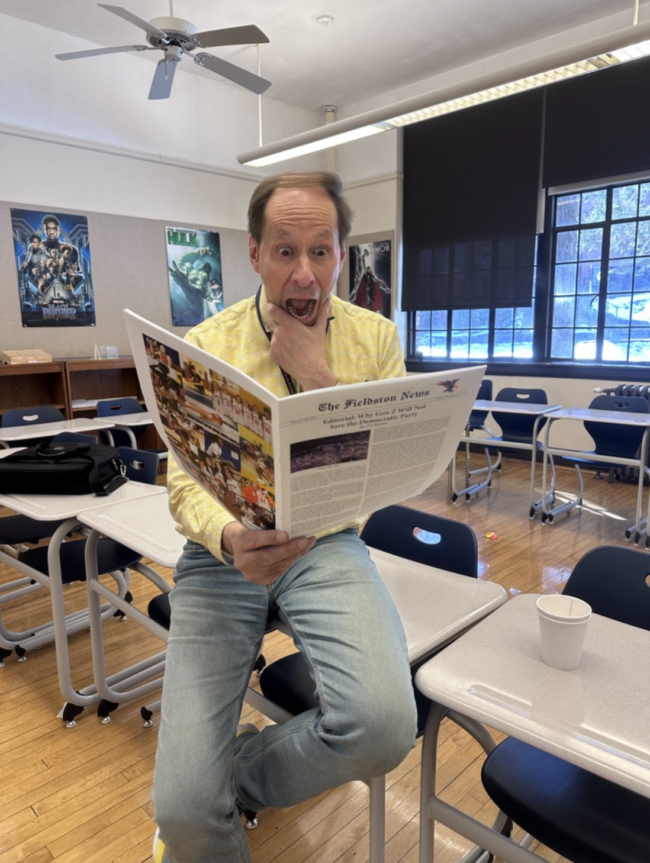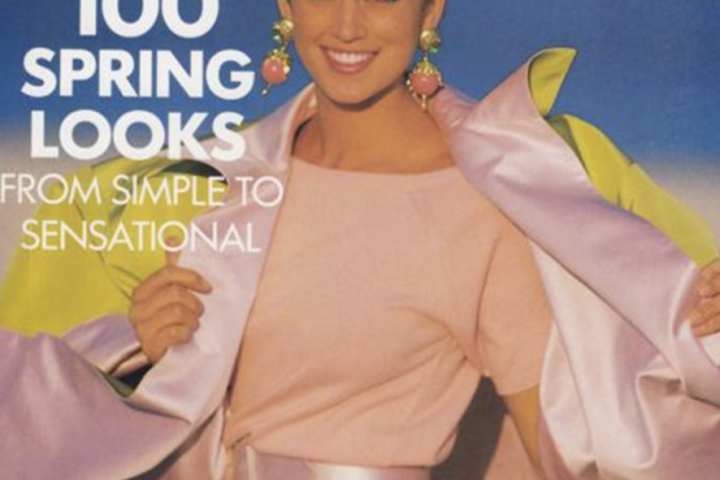Because of the First Amendment Right that protects the freedom of the press, the vast world of journalism offers countless perspectives and inundates people with a constant barrage of media and information every day. While this abundance allows for a range of diverse opinions to enter the public sphere, it presents some challenges. Contrasting narratives, biased reporting or simple misinformation leads to confusion and division. Additionally, some may tend to rely on or trust a single news source and will therefore have limited exposure to differing viewpoints. In early February, Fieldston hosted a series of sessions during Building Community day that aimed at improving students’ media literacy. Understanding where students get their news and identifying any potential issues with their media consumption is crucial in continuing this effort.
James Bennet, former editorial page editor of The New York Times, writes in a piece for The Economist, “The Times’s problem has metastasized from liberal bias to illiberal bias, from an inclination to favor one side of the national debate to an impulse to shut debate down altogether…Over the decades the Times and other mainstream news organizations failed plenty of times to live up to their commitments to integrity and open-mindedness.” Bennet reveals his frustration regarding what he believes is a significant shift in journalism’s role, particularly within The New York Times. Over time, it has moved farther away from traditional impartial views and tolerance for portraying facts regardless of political ideology and has embraced an “illiberal” bias that now suppresses views rather than creating a space for debates. He goes on to say how social media and other online platforms, which promote political polarization, have done much of the same, leading to an “echo chamber” effect in which people are only exposed to information that further reinforces their beliefs.
While checking a variety of news sources can help students avoid “echo chambers,” many still succumb to confirmation bias, the tendency to seek out, interpret support and report information in a matter that merely confirms or validates one’s prior beliefs or understanding. This is particularly concerning in the modern scope of the media, as social media platforms and the algorithms they run on often filter content to user affinities, creating isolated social “bubbles” that often lead to the spread of misinformation. Records from the Pew Research Center reveal that approximately 40% of American young adults aged 18-29 rely on social media as their main news source. This is highly problematic as among Americans who get their news from social media influencers, 70% report that these influencers have relayed different information than that of the mainstream media. Many of these influencers reinforce political and ideological biases, which heavily impact and filter the news much of America’s youth receives. This type of media consumption rapidly exacerbates political polarization, as people are rarely inspired to explore opposing viewpoints.
For Fieldston students unavoidably living in an environment dominated by social media, many are subconsciously subjected to media bias and misinformation appearing on their feeds. Growing up in New York City and attending an extremely liberal school, students are predisposed to view and support left-leaning and progressive ideologies. This is further inflamed by students’ mere reliance on The New York Times, a newspaper widely regarded for its left-leaning bias, for all news. Fieldston also offers a free subscription to the Times.
Fieldston is a school that prides itself on its commitment to providing a progressive education, teaching students how to think, question and explore through the practice of ethics. Founded by Felix Adler, a German-American professor of political and social ethics, Fieldston remains committed to listening and asking questions and holding discussions and debates. Despite this emphasis on independent thinking, the fact remains that the majority of news sources Fieldston students rely on are inherently biased.
Cristina Ellis (Form V) shares how she gets her news from The New York Times: “I think that they’re kind of famous, so I trust them because they’re famous.” This sentiment is emblematic of a broader trend among many Fieldston students, who often turn to the Times as their primary news source. Ellis acknowledges how she navigates its inherent biases, adding, “I kind of already have preformulated opinions about people, and if something doesn’t match up with my opinion, I just think it’s a bias.”
Han Lane (Form V) shares a comparable approach, citing The New York Times as his main source of news simply because he has the app downloaded. Lane notes that he does not acknowledge inherent biases in the media. “I generally read from news sectors that I know align with what I think.”
Other Fieldston students also echo a similar reliance on the Times. Stella Gerstenblatt (Form V) uses both The New York Times and The Wall Street Journal–mainly because Fieldston pays for student subscriptions to both publications. The school’s support shapes the news sources many students access, reinforcing their engagement with certain mainstream media outlets.
What’s particularly notable about this combination of news sources is that while the Times is widely recognized for its left-leaning perspective, The Wall Street Journal is often considered a right-leaning publication. Access to both media outlets could offer students a more balanced view, but it also risks deepening ideological and political divides if readers gravitate toward one and dismiss the other.
Chloe Keenan (Form VI) also names The New York Times as a main news source alongside CNN, attributing her choices to the influence of her family and teachers, as well as her upbringing in New York City. However, Keenan takes a more active approach to navigating media bias. “I do definitely check a variety of other news websites to make sure I’m getting the most accurate information,” she explains. This proactive approach helps Keenan avoid echo chambers by exposing herself to diverse ideological perspectives and preventing the reinforcement of preexisting beliefs.
Adelaide Feldman (Form VI) similarly mentions The New York Times as a preferred source, though she admits she doesn’t read the news often because she finds it “depressing.” Feldman’s stance highlights another layer of media engagement–the emotional toll associated with staying informed.
Natasha Kiel (Form V) cites PBS as her primary news source, explaining, “That’s what my parents play on the TV during dinner time.” She acknowledges that her upbringing and environment influence her opinions. She also is wary of social media, “I don’t have social media. If I did, I wouldn’t trust it because AI is lowkey getting convincing.”
Zena Imafidon (Form V) says, “I get my news from The New York Times or Gothamist.” She is also growing more skeptical of what she sees on social media due to the influx of fake news on it, “I am less inclined to believe any of the news I see, and I will usually double-check the information with a reputable source.”
Mr. Montera, history teacher and faculty advisor to the Fieldston News, who studied history and literature at Columbia University, but who’s been teaching journalism at Fieldston since 1986, reflects on how news consumption has evolved, “Life was much simpler when I was a kid,” he recalls. He names three main newspapers that he used to get his news from: The New York Times, The Daily News and the New York Daily Mirror. His family regularly tuned in to the evening broadcasts as well.
But today, as journalism and news media have expanded both in content and accessibility, Montera’s approach has changed significantly as well. “Because I teach world history and journalism, I have to very self-consciously search in all kinds of nooks and crannies. As a result, I’m dipping into lots of more new sources,” he says. He listens to the NPR radio for morning news, glances at the New York Times and Wall Street Journal, and looks at liberal publications like the Guardian and conservative publications like the American Mind and Claremont Institute. This wide array of sources gives him a broader view of an increasingly complex media landscape and he encourages his students to do the same. “Sometimes you just have to see how other people think and pay attention to the language they use. Endless comparing, endless contrasting. Then you have to synthesize and fill in the gaps. It comes down to you.”
Students can also consult The Tate Library’s News and Media Bias Resource Guide to improve their media literacy skills. The guide highlights how to identify bias by considering headlines, strong language, the agenda behind publishing the story, how the stories may change if told from another perspective, and photographs and captions that may visually affect one’s perspective. They provide several links to websites like Allsides and Ad Fontes. They also note the distinction between news and opinion; while news presents facts from an objective and impersonal standpoint, opinion seeks to persuade and is subjective and personal.
Allsides is a media organization that compiles sources from the left, the right and center and labels the sources according to their political bias. By presenting different articles side by side, the organization allows readers to compare how these perspectives report on the same issue and develop a more thorough understanding of current events.
Additionally, they can consider the Interactive Media Bias Chart, created by Ad Fontes Media, which places a variety of news sources on a graph according to their reliability and political bias to find out where their go-to source lies and consider other sources that they may not usually seek out.
The CARES acronym, coined by NBC, is another method for fact-checking information and identifying misinformation. Context considers whether information is being presented with proper and relevant details. Authenticity verifies if the content is undoctored or unedited and maintains its original integrity. Reasoning evaluates whether the argument is based on logic rather than emotion or propaganda. Evidence ensures there is factual proof to claims. Finally, source assesses if the provided information is backed by verifiable sources, like a standards-based news organization or a less trustworthy outlet. Keeping these five principles in mind is essential to making sure news is valid.
Students should also lessen their reliance on social media for getting their news. Algorithms tend to curate content based on user preferences and will, therefore, only show users what they like. This reinforces existing beliefs and puts students back in the echo chamber again.
As Fieldston students navigate ways to consume news, it’s crucial to practice forming a balanced understanding of current events. School support and cultural influences shape students’ choices, but the effort to fact-check and seek out varied views plays a crucial role in developing media literacy. By implementing these practices into their daily lives, people can gain a more nuanced and accurate understanding of both global and domestic news.






